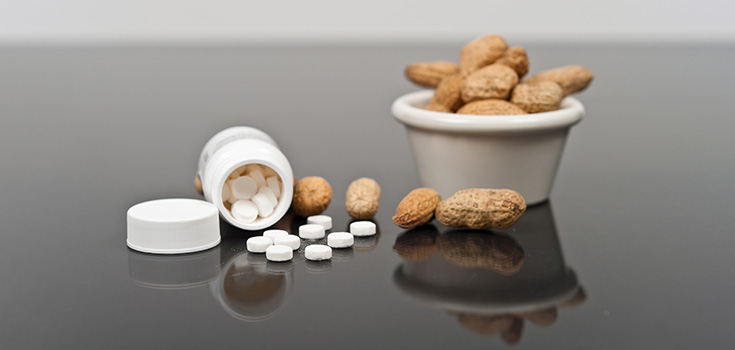Pesticide-Chemical in Tap Water Linked to Increase in Food Allergies

There is no question that pesticides are fueling numerous health complications; the research shows it time and time again. It’s also interesting that many health conditions such as obesity and cancer are simultaneously escalating with pesticide use, revealing a very serious connection. New research has just shown that yet another health problem is also increasing along with pesticide use – food allergies.
Using government data, researchers at the American College of Allergy, Asthma and Immunology sought out to find the potential link between pesticides and food allergies. They were particularly interested in dichlorophenols, a class of chemical compounds encompassing the well-known herbicide used in Agent Orange, 2,4-D. For their research, they measured the presence of dichlorophenols in urine to find any connection.
“We wanted to see if there was an association between certain pesticides and food allergies, and we were specifically interested in dichlorophenols because those were the ones that had this antibacterial effect. When researchers have compared bacteria from the bowel in healthy kids versus bacteria in the bowel for kids that have lot of allergies, they’ve noticed a big difference,” lead researcher Dr. Elina Jerschow said.
The researchers found that dichlorophenol-containing pesticides may be partly to blame for the rising cases of food allergies. The lead author of the study, Elina Jerschow, notes that these pesticides can ‘weaken food tolerance’ and subsequently lead to food allergies. The chemical is also added to chlorinate tap water.
“This chemical is commonly found in pesticides used by farmers and consumer insect and weed control products, as well as tap water…other dichlorophenol sources, such as pesticide-treated fruits and vegetables, may play a greater role in causing food allergy,” said Dr. Jerschow.”
According to a 2008 study by the Centers for Disease Control and Prevention, about an 18% increase in food allergies was seen between 1997 and 2007. Approximately 15 million people have food allergies, with children being most affected. About 8% of children have food allergies.
The potential connection between food allergies and dichlorophenol-containing pesticides is concerning, but it is arguably a lesser issue when compared to the more serious effects of pesticides – especially on a health-level alone. One study published in Environmental Health Perspectives has linked parental exposure to pesticides with an increased risk of brain cancer in children. And when the parents are exposed to the pesticides, it may also play an itegral role in the many different cellular changes that lead to cancer.
So what can you do? Avoid pesticide exposure whenever possible, and filter your tap water with a high quality water filtration device. As mentioned, produce and vegetables harness a great deal of pesticides, so buying organic is a must if you’re looking to reduce exposure. Here are simple ways to avoid pesticides in food. And no matter who you are, detoxifying your body naturally can help exponentially. Here are 7 ways to detox pesticides from your body.

The bottom line is that the pesticide enters the human body (working predominantly in the gut) where it negatively alters the gut flora and the result is that the gut no longer has (or has ENOUGH) of specific bacteria which are required to break down and assimilate certain macro and micronutrients. In the end it is the inability to break down the nutrients which causes them to pass through the gut and into the blood where they then go on to cause all kinds of havoc in the system.
The best thing you can do is constantly detox, constantly replace the beneficial gut bacteria (via probiotic supplements and/or fermented foods) and minimize your exposure to the pesticide in food and drink.
JOIN THE RESISTANCE! http://www.facebook.com/BigPharmaResistanceOfAmer… http://www.facebook.com/groups/BigPharmaResistanc…
Which water filtrations are good but not too expensive? How about pitcher ones or hook up to faucet (not entire house ones). Thanks for the help.